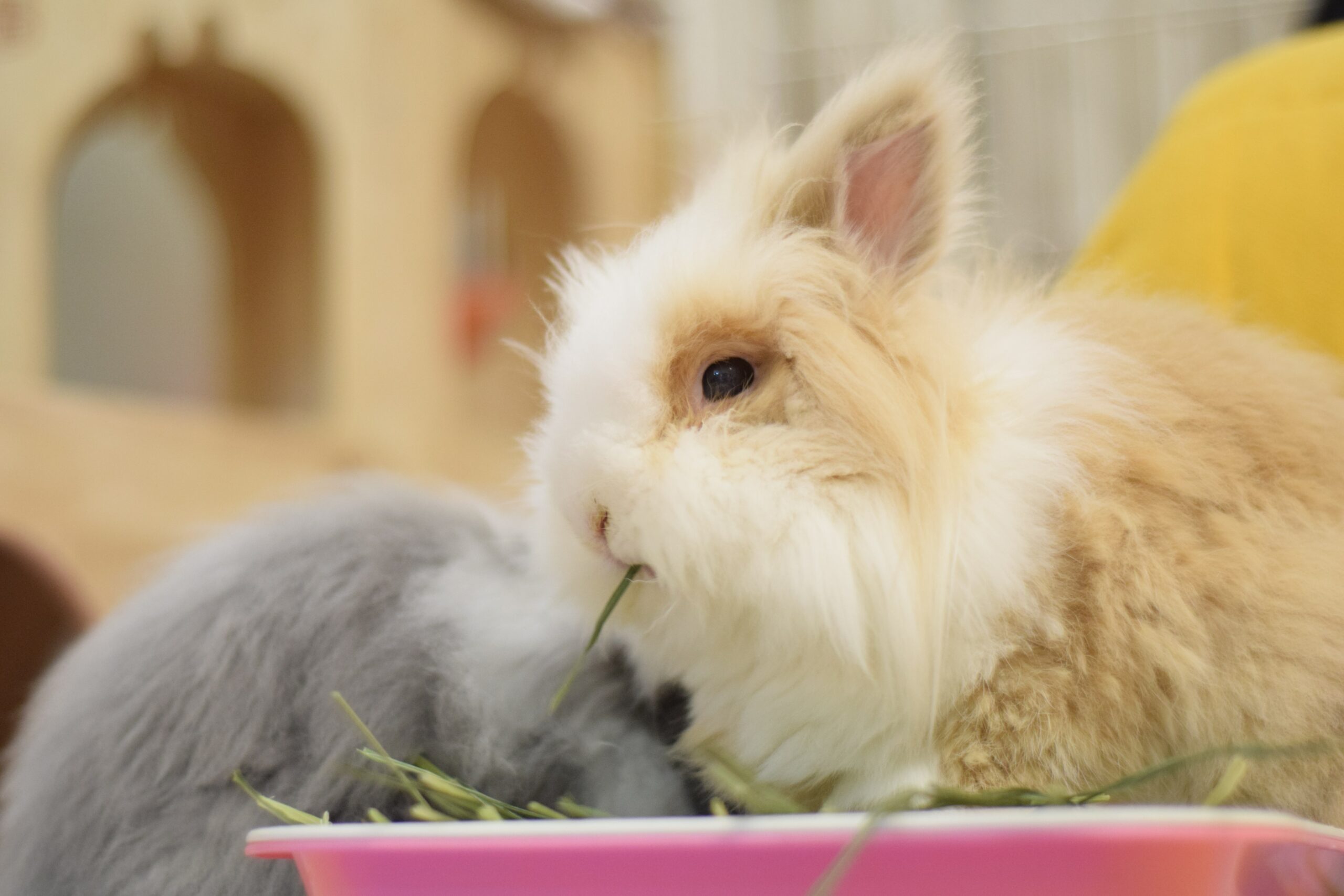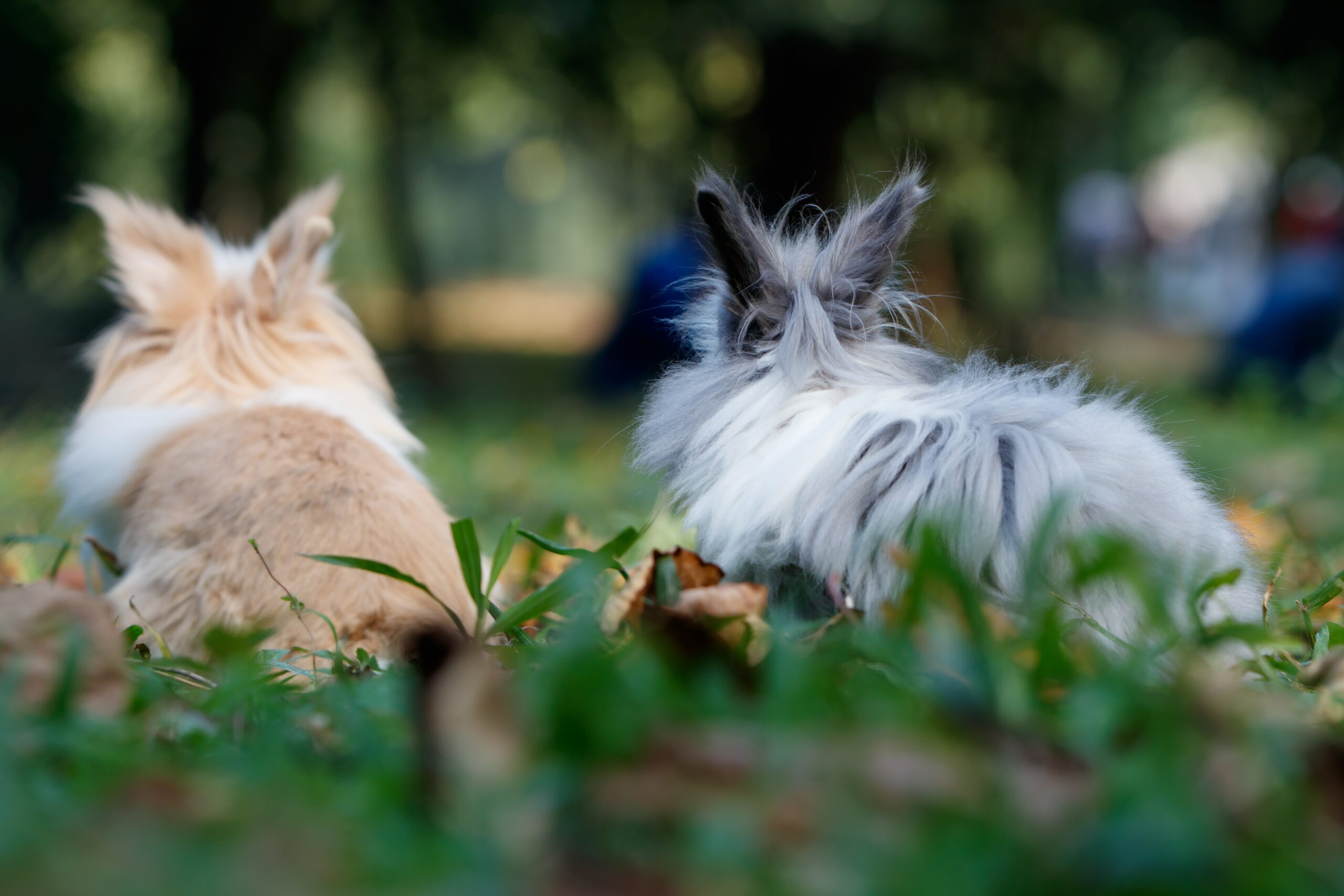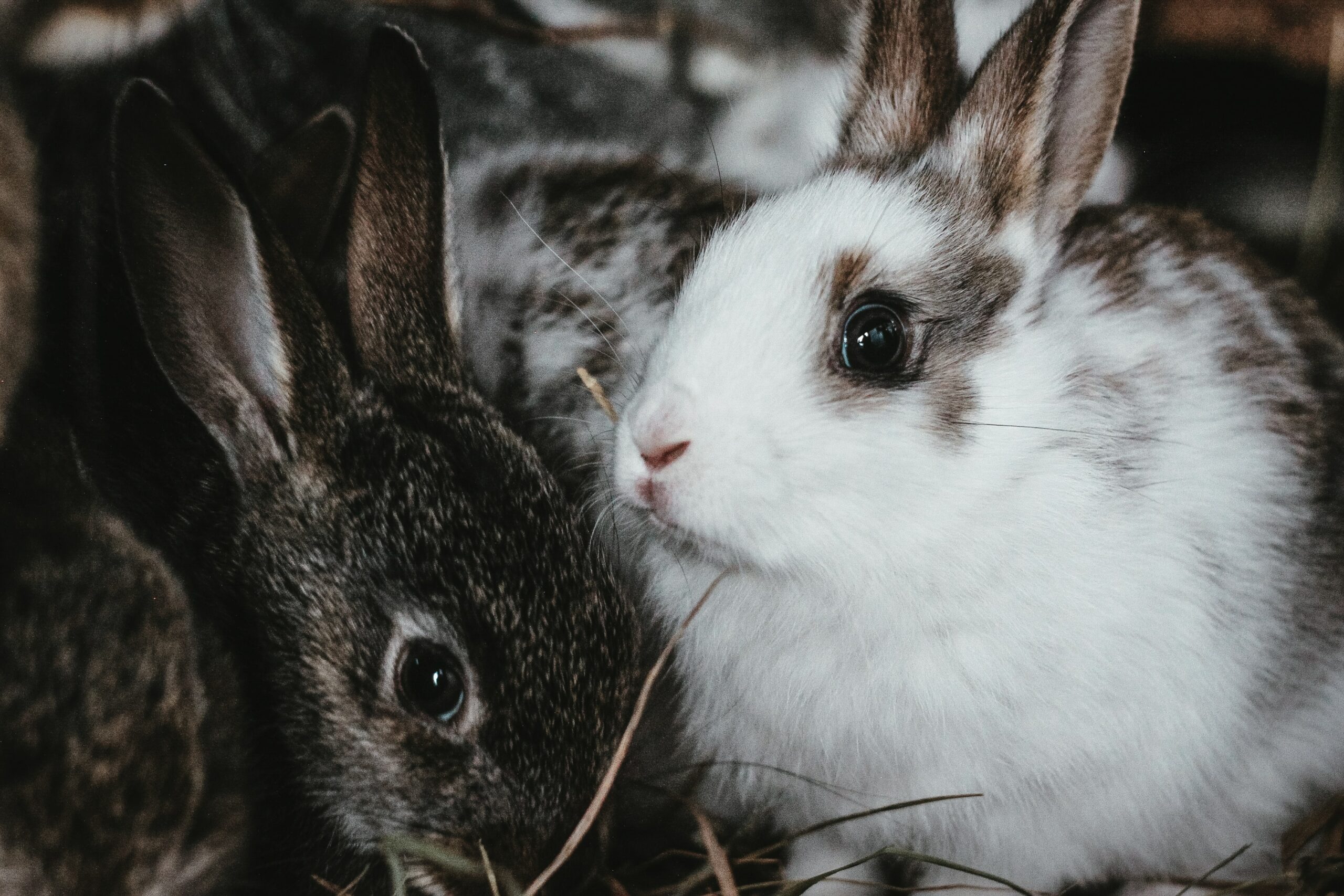Lionhead rabbits are known for their adorable appearance and unique mane-like fur, which sets them apart from other rabbit breeds. If you’re a proud owner of a lionhead female rabbit, understanding her heat cycle is essential for responsible care and breeding considerations.
In this comprehensive guide, we’ll delve into the intriguing world of a lionhead female rabbit’s heat cycle and answer all your burning questions.
How does a lionhead female rabbit’s heat cycle work?
A lionhead female rabbit’s heat cycle, also known as the estrous cycle, is the period when she is sexually receptive and potentially fertile. Unlike humans, lionhead rabbits are induced ovulators, meaning they ovulate only when stimulated by mating.
Their reproductive system is intricately connected to external factors, such as the presence of a male rabbit or certain environmental cues.
When can you expect your lionhead female rabbit to go into heat for the first time?

The timing of a lionhead female rabbit’s first heat cycle can vary from rabbit to rabbit. Generally, they reach sexual maturity and experience their first heat cycle between the ages of 4 to 6 months.
However, it’s important to remember that individual rabbits may have slight variations in their development. Monitoring your rabbit closely and observing the signs mentioned earlier can give you a better idea of when she might enter her first heat cycle.
Are there any external factors that influence the timing of a lionhead female rabbit’s heat cycle?
Indeed, external factors can influence the timing of a lionhead female rabbit’s heat cycle. The primary factor is the presence of a male rabbit. When a female rabbit senses the pheromones of a male rabbit, it can trigger her heat cycle.
Additionally, environmental factors like the change in seasons or prolonged exposure to natural light can impact the onset and frequency of a lionhead female rabbit’s heat cycles. However, it’s worth noting that these factors may affect rabbits differently, and individual variations are common.
What are the signs that a lionhead female rabbit is entering heat?
When a lionhead female rabbit is entering her heat cycle, there are several telltale signs to watch out for. She may display increased mounting behavior, attempting to mount objects or even other rabbits in your household.
Restlessness and hyperactivity are also common during this period, as she may become more active and exhibit a heightened energy level. Pay attention to any swelling and reddening of her genital area, as this indicates that she is approaching the peak of her heat cycle.
Additionally, she may exhibit aggressive behavior towards male rabbits and display increased urine marking.
| Signs of Heat in Lionhead Female Rabbits | Duration of Heat Cycle | Best Practices for Managing Heat Cycle |
|---|---|---|
| Increased mounting behavior | Approximately 12-14 days | Provide a separate living space |
| Restlessness and hyperactivity | Varying between individuals | Keep a close eye on behavioral changes |
| Swelling and reddening of the genital area | May repeat every few weeks | Ensure a calm and stress-free environment |
| Aggressive behavior toward males | Dependent on individual rabbit | Consider spaying if not breeding |
| Increased urine marking | Can vary but usually for a few days | Provide appropriate litter box options |
What is the average duration of a lionhead female rabbit’s heat cycle?
On average, a lionhead female rabbit’s heat cycle lasts approximately 12 to 14 days. However, this duration can vary slightly among individuals.
During this period, her receptivity to mating is at its peak. It’s important to keep in mind that if you’re not planning to breed your lionhead rabbit, providing a separate living space for her during this time is crucial to prevent unwanted pregnancies.
Can a lionhead female rabbit go into heat while pregnant or nursing?

No, a lionhead female rabbit cannot go into heat while pregnant or nursing. Once a female rabbit becomes pregnant, her reproductive system goes through a temporary pause until she gives birth and weans her offspring.
It’s crucial to provide a comfortable and safe environment for pregnant and nursing rabbits to ensure their well-being and the health of their kits.
How can you track and predict the onset of a lionhead female rabbit’s heat cycle?
Observation and tracking are key when it comes to predicting and tracking a lionhead female rabbit’s heat cycle. Monitoring her behavior for signs like mounting behavior, restlessness, and swelling of the genital area can give you an indication that she is entering or in the midst of her heat cycle.
Keeping a calendar or using a digital tracking app can help you track the frequency and duration of her heat cycles, allowing you to predict future cycles more accurately. Additionally, if you have a male rabbit in the vicinity, his behavior towards the female rabbit can also serve as a cue that she may be entering her heat cycle soon.
Is there a specific age when a lionhead female rabbit becomes fertile?
Lionhead female rabbits typically become fertile around the age of 4 to 6 months, which coincides with their sexual maturity. However, it’s important to note that individual rabbits may have slight variations in their development.
It’s advisable to consult with a veterinarian to determine the best time for breeding and ensure the health and well-being of both the female and potential offspring.
Are there any health issues that can affect a lionhead female rabbit’s heat cycle?
Lionhead female rabbits, like any living beings, can experience certain health issues that may impact their heat cycles. It’s important for rabbit owners to be aware of these potential issues to ensure the well-being of their furry companions.
Some health issues that can affect a lionhead female rabbit’s heat cycle include:
-
Hormonal Imbalance: An imbalance in hormone levels can disrupt the regularity of heat cycles or even cause them to cease altogether. Conditions such as ovarian cysts or uterine infections can contribute to hormonal imbalances in rabbits.
-
Reproductive Disorders: Certain reproductive disorders, such as pyometra (uterine infection) or endometritis (inflammation of the uterine lining), can interfere with a rabbit’s heat cycle. These conditions can cause irregularities, pain, or discomfort.
-
Stress and Environmental Factors: Stressful situations or significant environmental changes can impact a rabbit’s overall health, including their reproductive system. Stress can disrupt hormonal balance and potentially affect the timing and regularity of heat cycles.
-
Obesity: Obesity can have a negative impact on a rabbit’s overall health, including their reproductive health. Excessive weight can lead to hormonal imbalances and increase the risk of reproductive disorders.
-
Genetic Predispositions: Some lionhead rabbits may have genetic predispositions to certain health issues that can affect their heat cycles. It’s important to be aware of any breed-specific conditions and monitor your rabbit’s health accordingly.
Can the environment or season affect the timing of a lionhead female rabbit’s heat cycle?
Yes, the environment and season can indeed influence the timing of a lionhead female rabbit’s heat cycle. Rabbits, like many animals, are sensitive to changes in natural light and temperature.
As the seasons change, the amount of daylight and temperature variations can affect their biological rhythms and trigger or delay their heat cycles. It’s important to provide a consistent and comfortable environment for your lionhead rabbit, minimizing stressors that can disrupt their natural reproductive patterns.
How can you prepare for a lionhead female rabbit’s heat cycle in terms of housing and behavior?
Preparing for a lionhead female rabbit’s heat cycle involves ensuring appropriate housing and managing her behavior during this time. Firstly, providing a separate living space for her during her heat cycle is crucial, especially if you don’t plan to breed her.
This prevents unwanted pregnancies and potential conflicts with male rabbits. Ensuring a calm and stress-free environment is also essential, as stress can disrupt her heat cycle and overall well-being.
Additionally, providing enrichment activities and toys can help keep her engaged and alleviate any restlessness or hyperactivity she may experience during this period.
What are the potential behavioral changes during a lionhead female rabbit’s heat cycle?
During a lionhead female rabbit’s heat cycle, you may observe several behavioral changes. Increased mounting behavior is one of the most noticeable signs, as she may attempt to mount objects or other rabbits in your household.
Restlessness and hyperactivity are also common, as her energy levels may be heightened during this time. It’s important to provide her with ample opportunities for exercise and mental stimulation to channel her energy positively.
Additionally, she may exhibit aggressive behavior towards male rabbits, asserting her dominance and protecting her territory.
Is it possible to control or regulate a lionhead female rabbit’s heat cycle?
While it’s not possible to directly control or regulate a lionhead female rabbit’s heat cycle, there are options available to manage it. One effective method is spaying, which involves the removal of the uterus and ovaries.
Spaying not only prevents unwanted pregnancies but also eliminates the hormonal fluctuations associated with heat cycles, reducing the risk of certain reproductive-related health issues. It’s essential to consult with a qualified veterinarian to discuss the pros and cons of spaying and make an informed decision based on your rabbit’s specific needs and circumstances.
Can a lionhead female rabbit’s heat cycle synchronize with other rabbits?

Yes, it is possible for a lionhead female rabbit’s heat cycle to synchronize with other rabbits in the vicinity. This phenomenon, known as estrus synchronization, occurs when multiple female rabbits living in close proximity begin their heat cycles around the same time.
The exact cause of this synchronization is not fully understood, but it is believed to be influenced by environmental cues and pheromones released by the rabbits. If you have multiple female rabbits, you may notice that their heat cycles align, which can have implications for breeding and management.
What are the implications of a lionhead female rabbit’s heat cycle for breeding and reproduction?
A lionhead female rabbit’s heat cycle plays a vital role in breeding and reproduction. During her heat cycle, she is receptive to mating and has the potential to become pregnant.
If you are planning to breed your lionhead rabbit, it is essential to carefully monitor her heat cycles and introduce her to a suitable male rabbit during her receptive period. Breeding should be done responsibly and with proper knowledge and preparation to ensure the health and well-being of both the female rabbit and potential offspring.
It’s important to note that breeding rabbits should only be done by experienced individuals or under the guidance of a qualified veterinarian.
Final Remarks
Understanding the intricacies of a lionhead female rabbit’s heat cycle is essential for responsible care and breeding considerations. Monitoring the signs and behavior associated with her heat cycle, providing appropriate housing and enrichment, and considering spaying are all crucial aspects of managing her reproductive health.
By being attentive and informed, you can ensure the well-being of your lionhead rabbit and make informed decisions regarding breeding. Remember, consult with a veterinarian for personalized advice and guidance based on your rabbit’s specific needs.